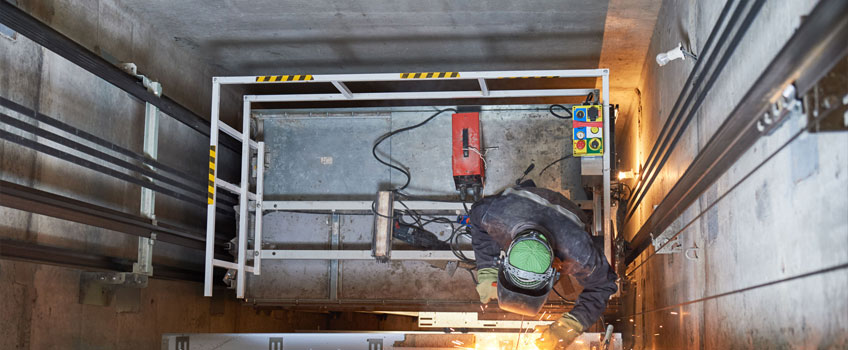A Thorough Approach to Enhancing Efficiency With Strategic Lift Repair Service Techniques
A systematic and critical strategy to lift fixing and upkeep is important to make best use of efficiency and lessen downtime. By attending to usual lift concerns, executing positive upkeep measures, and establishing targeted repair strategies, centers can maximize their lift systems to operate at peak performance degrees.
Importance of Lift Efficiency Optimization
Understanding the importance of maximizing lift performance is critical for guaranteeing effective and trusted vertical transport systems in various structures and frameworks. Lifts are vital parts of modern-day facilities, providing vertical mobility for occupants and items within buildings of differing heights. By maximizing lift efficiency, building owners and center managers can boost individual experience, improve power efficiency, and boost general operational efficiency.
Efficient lift performance optimization involves numerous factors, including speed, ability, energy security, maintenance, and intake needs. Properly enhanced lifts can minimize wait times for users, particularly in high-traffic structures, bring about improved satisfaction and efficiency. Furthermore, enhanced lifts contribute to power savings by using innovative control systems and modern technologies that minimize power intake without compromising efficiency.

Identifying Common Lift Issues
Identifying typical lift issues is necessary for maintaining the functional performance and security of vertical transport systems in buildings. This problem can be indicative of issues with the lift's motor, control system, or even the positioning of the lift car.
Another prevalent lift concern is strange noises emanating from the lift shaft or machinery room. These noises can range from grinding or scraping noises to loud clunking noises, all of which may signal underlying mechanical concerns that require instant focus. Additionally, constant door malfunctions, such as doors not opening up or shutting appropriately, can interrupt the smooth flow of guests and position safety and security dangers.
Executing Proactive Upkeep Procedures
To maximize the efficiency and durability of lift systems, proactive maintenance procedures play a crucial function in ensuring functional dependability and safety. platform lift dimensions. Carrying out aggressive maintenance entails systematically evaluating, maintenance, and fixing components before they fall short, hence protecting against pricey downtime and potential security risks. Regularly scheduled examinations can assist identify minor problems prior to they rise right into major issues, eventually expanding the life expectancy of lift systems
One secret aspect of positive upkeep is developing a comprehensive upkeep timetable based upon manufacturer recommendations and market ideal practices. This timetable must outline jobs such as lubrication, positioning checks, and part substitutes at defined periods. Additionally, executing condition tracking strategies, such as resonance analysis and thermal imaging, can assist identify very early signs of wear or breakdown.
Furthermore, training maintenance team on appropriate inspection strategies and precautionary maintenance procedures is crucial for the successful implementation of aggressive upkeep measures. By cultivating a culture of positive upkeep within a company, lift systems can run at peak performance levels, decreasing disruptions and ensuring the security of customers.
Developing Targeted Repair Plans
Upon assessing the maintenance documents and performance information, the engineering team can develop targeted repair work plans to enhance and attend to certain problems lift system performance. These repair service strategies are customized to the determined issues, making sure that sources are concentrated on dealing with crucial concerns effectively. By focusing on fixings based upon their influence on performance and safety, the targeted repair plans aid decrease downtime and maintenance costs while making best use of the visit here lift system's integrity.
Establishing these strategies click here for more info entails a comprehensive evaluation of the lift system parts, consisting of electric motors, wires, brakes, and control systems. Through this detailed evaluation, the engineering team can identify the origin of any kind of malfunctions or destruction in performance. This information is after that utilized to create a roadmap for the fixing process, outlining the required steps, timeline, and sources required to attend to each issue properly.
Additionally, targeted fixing plans might include preventative procedures to boost the lift system's long life and performance. By proactively resolving potential problems prior to they rise, these plans add to the general performance and security of the lift system.
Using Data-Driven Insights
Harnessing the power of data-driven understandings is essential in enhancing lift system performance and maintenance efficiency. These anticipating upkeep approaches help avoid unforeseen failures, reduce downtime, and extend the lifespan of lift systems.

Conclusion
Finally, enhancing lift performance is important for making certain effectiveness and safety and security in buildings. By recognizing common lift issues, implementing aggressive maintenance actions, establishing targeted repair work plans, and utilizing data-driven understandings, organizations can boost efficiency and minimize downtime. It is very important to take an extensive approach to lift repair work strategies to make best use of operational effectiveness and ensure the longevity of lift systems.
By dealing with that site usual lift problems, carrying out positive maintenance measures, and establishing targeted repair work plans, facilities can enhance their lift systems to operate at peak efficiency levels.One more widespread lift concern is unusual noises emanating from the lift shaft or machinery area.Upon analyzing the upkeep documents and performance information, the design team can develop targeted repair service strategies to address particular concerns and optimize lift system functionality. By prioritizing fixings based on their influence on efficiency and safety and security, the targeted repair work plans aid minimize downtime and upkeep expenses while making the most of the lift system's integrity.
It is crucial to take a comprehensive approach to raise repair work approaches to maximize functional efficiency and guarantee the durability of lift systems.